Evaluation of 3-Axial Knee Joint Torques Produced by Compression Sports Tights in Running Motion †
Abstract
1. Introduction
2. Materials and Methods
3. Results
4. Discussion
5. Conclusions
References
- Aoki, H.; Shimana, T.; Sato, H.; Yabuki, R.; Matsuda, A. Joint torque calculation of compression sports spats using anisotropic hyperelastic model. Procedia Eng. 2016, 147, 257–262. [Google Scholar] [CrossRef]
- Robert, J.S.; Brendan, S.L.; Jodie, A.W.; David, G.L.; Tim, L.A.D. Prolonged running increases knee moments in sidestepping and cutting manoeuvres in sport. J. Sci. Med. Sport 2018, 21, 508–512. [Google Scholar]
- Matsuda, A.; Tanabe, H.; Nagaoka, T.; Nakashima, M.; Shimana, T.; Omori, K. 3D-CG based stress calculation of competitive swimwear using anisotropic hyperelastic model. Impact Technol. Sport V 2013, 60, 349–354. [Google Scholar] [CrossRef]
- Rivlin, R.S.; Saunders, D.W. Large elastic deformations of isotropic materials VII. Experiments on the deformation of rubber. Philos. Trans. R. Soc. Lond. Ser. A Math. Phys. Sci. 1951, 243, 251–288. [Google Scholar]
- Asai, M.; Kimura, Y.; Sonoda, Y.; Nishimoto, Y.; Nishino, Y. Constitutive modeling for texture reinforced rubber by using an anisotropic visco-hyperelastic model. J. Struct. Mech. Earthq. Eng. A 2010, 66, 194–205. [Google Scholar] [CrossRef][Green Version]
- Shimana, T.; Nakashima, M.; Matsuda, A.; Omori, K. A new method for designing sportswear by using three-dimensional computer graphic based anisotropic hyperelastic models and musculoskeletal simulations. Procedia Eng. 2013, 60, 331–336. [Google Scholar] [CrossRef][Green Version]
- Kawamura, S.; Yukawa, H.; Hirai, A.; Aoyama, S.; Matsubara, M. Study of joint reaction force, moment and muscle activity of lower limbs during running (Comparison of the rear foot strike and the fore foot strike). Trans. JSME 2016, 82, 15-00438. [Google Scholar]
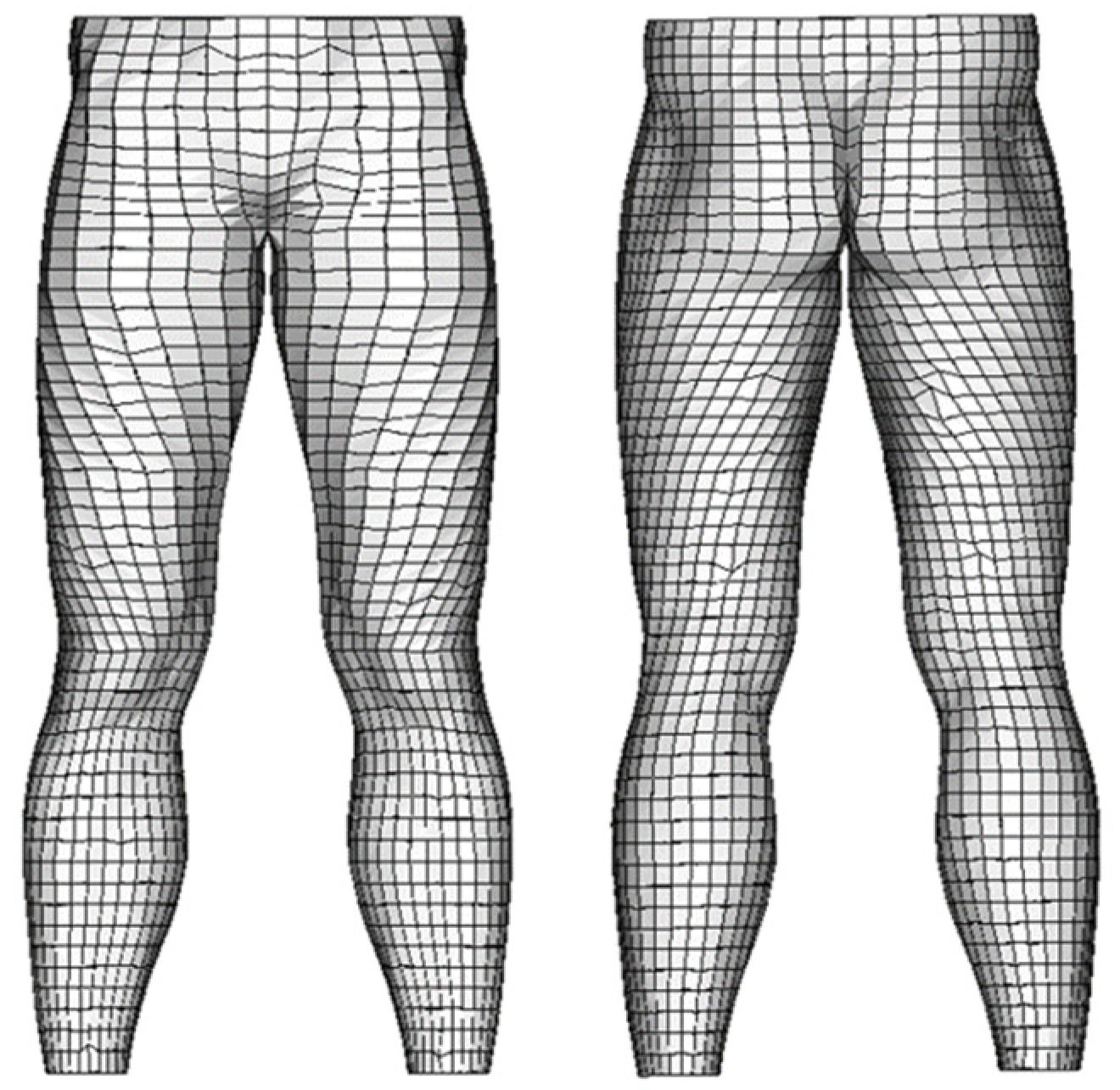
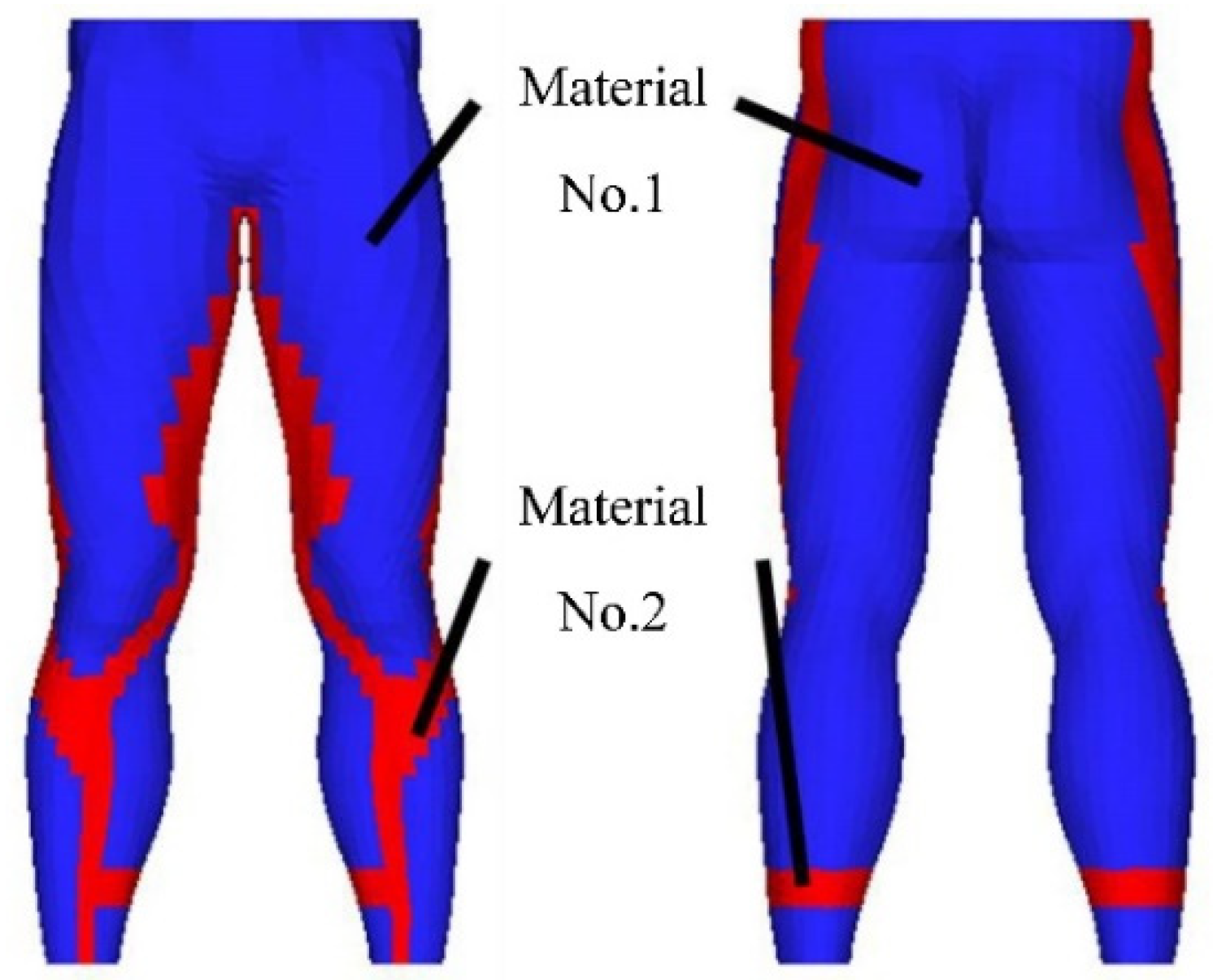
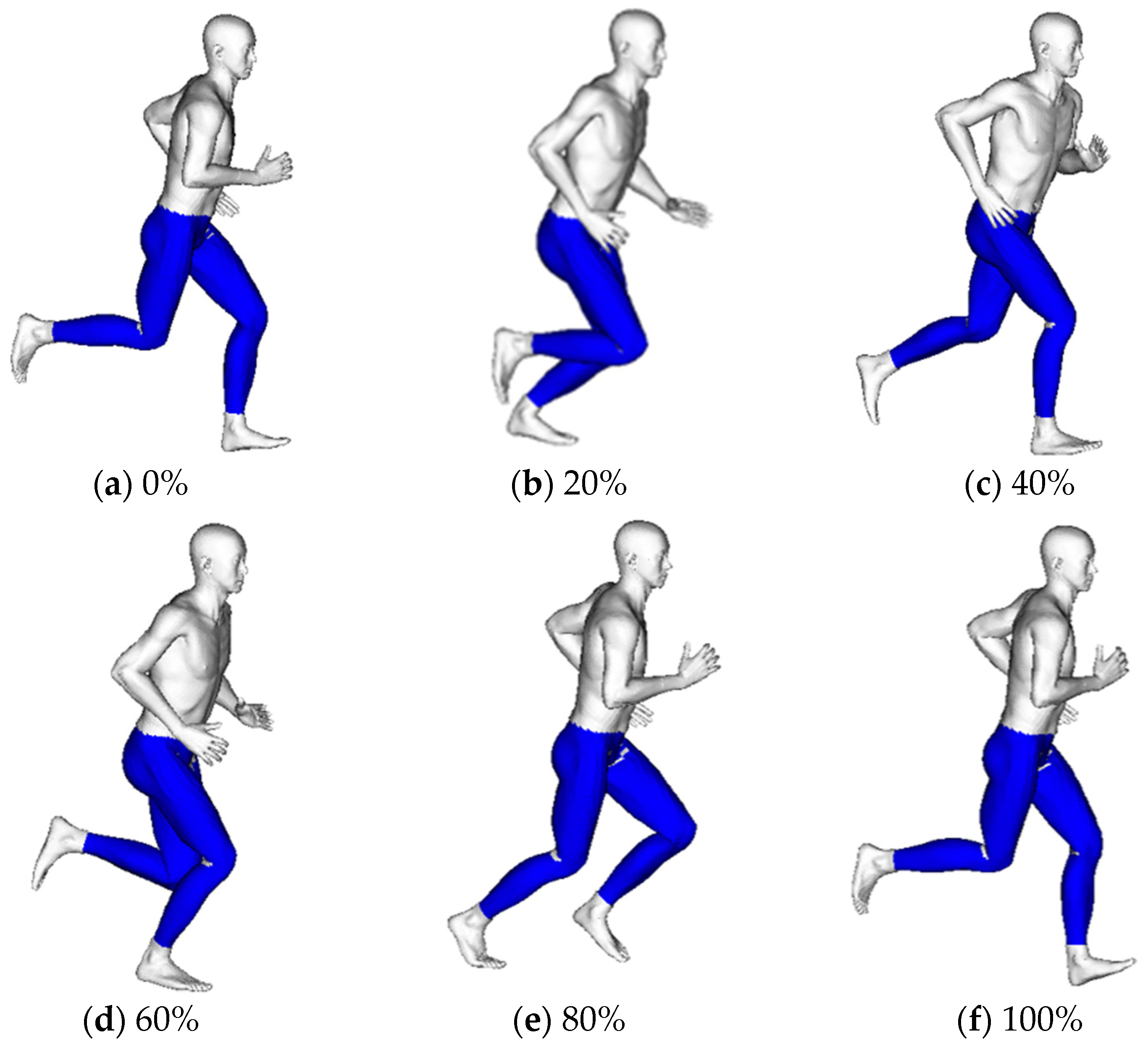
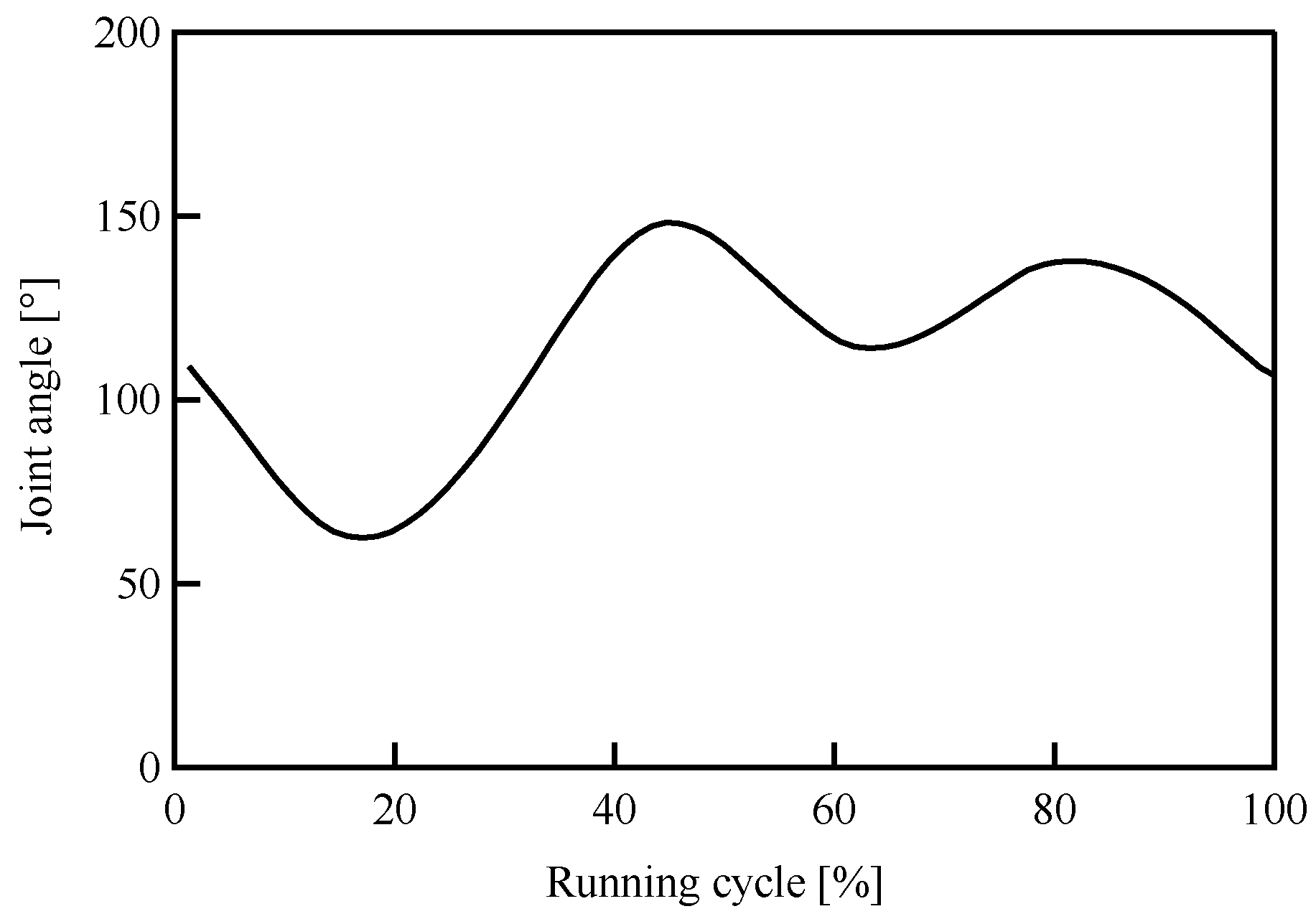
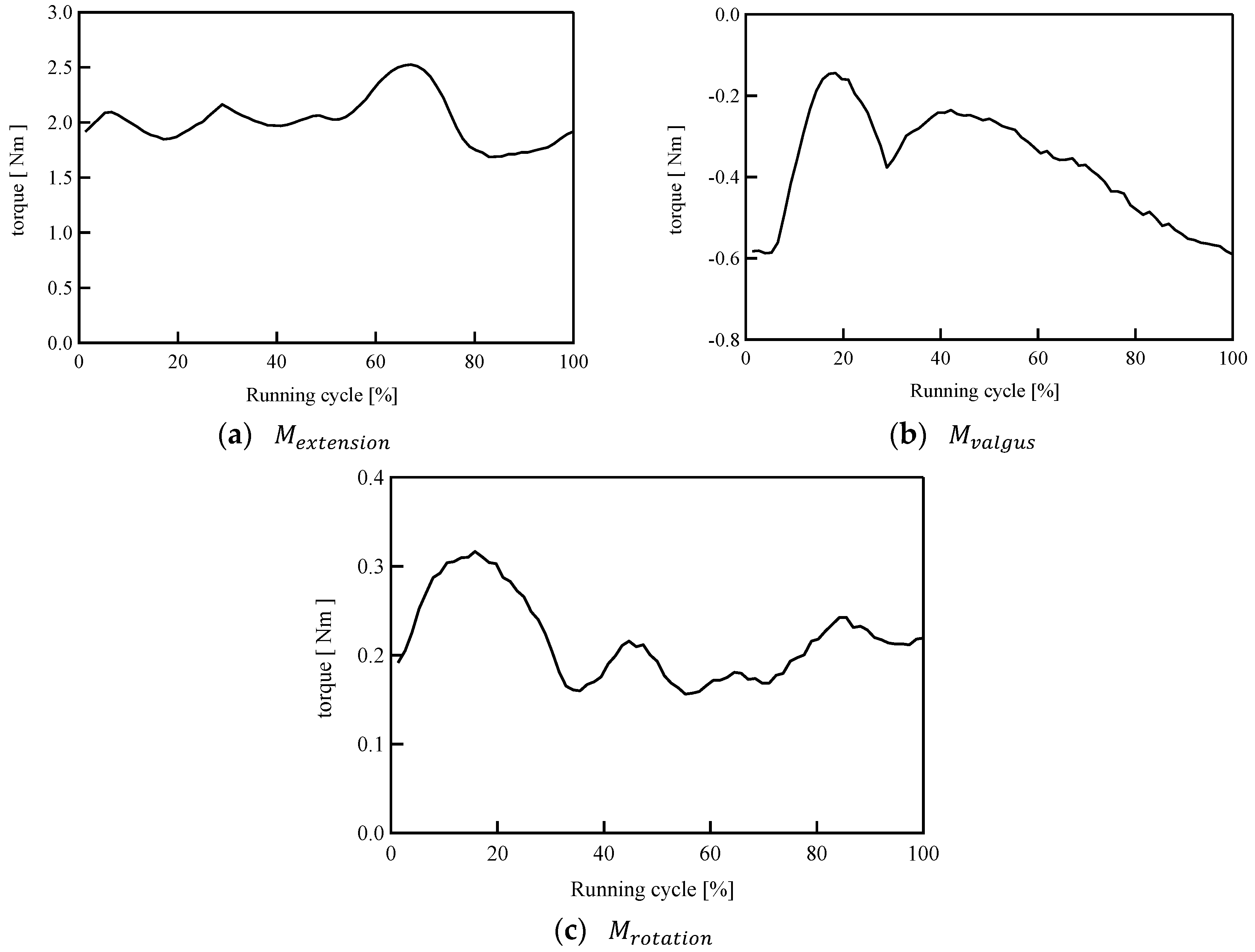
Publisher’s Note: MDPI stays neutral with regard to jurisdictional claims in published maps and institutional affiliations. |
© 2020 by the authors. Licensee MDPI, Basel, Switzerland. This article is an open access article distributed under the terms and conditions of the Creative Commons Attribution (CC BY) license (https://creativecommons.org/licenses/by/4.0/).
Share and Cite
Mori, T.; Ogino, Y.; Matsuda, A.; Funabashi, Y. Evaluation of 3-Axial Knee Joint Torques Produced by Compression Sports Tights in Running Motion. Proceedings 2020, 49, 69. https://doi.org/10.3390/proceedings2020049069
Mori T, Ogino Y, Matsuda A, Funabashi Y. Evaluation of 3-Axial Knee Joint Torques Produced by Compression Sports Tights in Running Motion. Proceedings. 2020; 49(1):69. https://doi.org/10.3390/proceedings2020049069
Chicago/Turabian StyleMori, Taisei, Yohei Ogino, Akihiro Matsuda, and Yumiko Funabashi. 2020. "Evaluation of 3-Axial Knee Joint Torques Produced by Compression Sports Tights in Running Motion" Proceedings 49, no. 1: 69. https://doi.org/10.3390/proceedings2020049069
APA StyleMori, T., Ogino, Y., Matsuda, A., & Funabashi, Y. (2020). Evaluation of 3-Axial Knee Joint Torques Produced by Compression Sports Tights in Running Motion. Proceedings, 49(1), 69. https://doi.org/10.3390/proceedings2020049069



